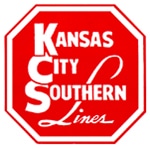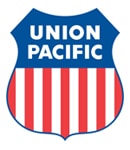
Author: amyr
Upon the urging of SMART, the Will County Board passed a resolution supporting the Federal Railroad Administration’s (FRA) proposed two-person crew rule. The deadline to submit comments on the propose rule is May 16, 2016. Click here to submit your comments.
Will County Board passes resolution supporting FRA’s proposed two-person crew rule

Guy
JOLIET, Ill.—A coordinated effort recently among SMART TD and SMART led to the passage of a resolution in support of FRA’s proposed two person crew rule by the Will County Board.
The resolution passed unanimously last Thursday at the regular meeting of the Will County Board after passing unanimously out of the Legislative Committee on April 12.
“When FRA announced its Notice of Proposed Rulemaking for two person crews, SMART TD State Directors were encouraged to garner support for the pending rule,” said SMART TD Illinois State Director Robert W. Guy.
“What better way to show support than by having a rail-intensive community pass a resolution in support of FRA’s proposed rule and submitting it as part of the docket,” Guy said.
The strong relationship between our Illinois members of SMART TD and SMART really paid off in this effort.
“Once we got our marching orders from our national legislative office I met with Don Moran,” Guy said. “Brother Don is a Business Representative for SMART Local 265 out of Carol Stream, but also serves on the Will County Board.”
“When I briefed Don on the pending rule he immediately saw the potential negative implications for his community should rail carriers be allowed to operate trains with a lone crew member,” Guy said. “He was more than happy to introduce and shepherd through the supportive resolution.”
“The overwhelming support for the resolution is a testament to Don’s hard work,” Guy said. “We owe a big thank you to Don and his colleagues on the Board.”
“The ground work that Don accomplished really showed when I addressed the Board at their meeting last week,” Guy said. “After explaining what the proposed rule would do the Board passed the resolution unanimously.”
That local support should way heavy on FRA when they consider all comments received in regards to the proposed rule. It’s communities like Will County that have the potential to suffer most if rail carriers are allowed to operate trains with one crew member.
“This kind of support reinforces the results of the extensive polling SMART-TD has conducted over the past few years regarding crew size,” Guy said. “Citizens overwhelmingly have shown that they don’t want trains running through their communities with less than two people on board.”
The Resolution as passed by the Will County Board:
RESOLUTION OF THE COUNTY BOARD
WILL COUNTY, ILLINOIS
Resolution in Support of FRA Crew Size Rule
WHEREAS, the safe operation of freight and passenger trains are vital to commerce; and Will County supports efforts to keep train operations safe in our (state, county)
WHEREAS, the Federal Railroad Administration (FRA) has published a notice of proposed rulemaking (NPRM) regarding adequate staffing on trains, a factor we believe is
vital to ensuring safe train operations; and
WHEREAS, national studies show that a minimum of two on-board crew members are vital to operate a train safely and minimize the likelihood of train-related accidents; and
WHEREAS, virtually all trains in North America are already operated by crews of at least two individuals, making the economic impact of this proposed rule minimal; and
WHEREAS, the FRA agrees that, while advancements in automated technology such as Positive Train Control (PTC) systems improve railroad safety, they are not a substitute for a train’s on-board crew members.
NOW, THEREFORE BE IT RESOLVED, that the Will County Board hereby supports the Federal Railroad Administration’s proposed ruling, requiring that trains operated in America be operated by no less than a two-person crew.
BE IT FURTHER RESOLVED, that the County Clerk shall send a copy of this Resolution to the United States Department of Transportation in the form of comments in support of the proposed federal rule.
BE IT FURTHER RESOLVED, that the Preamble of this Resolution is hereby adopted as if fully set herein. This Resolution shall be in full force and effect upon its passage and approval as provided by law.

“As we managed through the impact of the continued coal decline and other market forces during the first quarter, CSX took aggressive actions to improve efficiency, reduce costs and streamline resources across the network to further reshape the company,” CEO Michael J. Ward said.
Revenue for the quarter declined 14 percent, reflecting a lower fuel recovery, a 5 percent volume decline and a $95 million year-over-year decline in other revenue. Expenses also decreased by 12 percent, driven by efficiency gains of $133 million and lower volume-related costs of $64 million. CSX reported a decrease to operating income of $139 million to $704 million. At the same time, the operating ratio increased 90 basis points year-over-year to 73.1 percent.
“While CSX delivered strong efficiency gains in the first quarter, we continue to expect full-year earnings per share to decline in 2016 as a result of ongoing coal headwinds combined with other market fundamentals. At the same time, CSX remains focused on meeting and exceeding customer expectations while driving further efficiency savings to maximize shareholder value and achieve a mid-60s operating ratio longer term.”
Operating ratio is a railroad’s operating expenses expressed as a percentage of operating revenue, and is considered by economists to be the basic measure of carrier profitability. The lower the operating ratio, the more efficient the railroad.

Revenue decreased by 7 percent to $563 million. Operating income increased 5 percent to $188 million. Carload volumes for the quarter were 5 percent lower than in the first quarter 2015. Revenue declined 1 percent.
Operating expenses decreased by 12 percent to $375 million. Operating ratio came in at 66.6 percent, a 2.3 point improvement as compared with the reported 70.5 percent of the first quarter 2015. Diluted earnings per share were $0.99. Adjusted diluted earnings per share were $1.03.
“Despite flooding that shut down key portions of our U.S. rail network for over three weeks, KCS delivered solid earnings and operating results,” said CEO David L. Starling. “That we overcame this very significant challenge while simultaneously scaling costs across the network clearly demonstrates KCS’ ability to react quickly to rapid and unexpected changes to its operating environment.”

“The precision railroading model works in all economic environments,” said CP CEO E. Hunter Harrison. “Despite weakness in the economy and volume headwinds, we focused on what we can control – our costs and our commitment to providing reliable service – and delivered a record performance.”
Revenues for the railroad were down 4 percent to C$1.59 billion from 2015’s first quarter revenues of C$1.67 billion. Operating income increased 7 percent to C$653 million from C$612 million. Net income rose 69 percent to C$540 million from C$320 million. Adjusted income was up 2 percent to C$384 million from the reported C$375 million of the first quarter last year.
“I am proud of what the team continues to produce quarter after quarter in these difficult times and we remain optimistic in our outlook given signs of stabilization within the Canadian economy and in key global markets,” Harrison said. “As market conditions improve and volumes increase, our team of professional railroaders will be ready. Furthermore, we are confident in our plan to deliver shareholder value, which includes the announcement of a new share repurchase program that demonstrates our continued confidence over the long-term.”

Operating revenue was down 14 percent to $4.8 billion. The railroad reported a first quarter net income of nearly $1.0 billion or $1.16 per diluted share, down 11 percent as compared to last year’s first quarter of $1.2 billion or $1.30 per diluted share. Operating income was down 15 percent to $1.7 billion and operating ratio went up 0.3 points to 65.1 percent.
“In this challenging environment, we have continued our intense focus on operating safely and efficiently, managing our resources, and improving our customer experience,” said CEO Lance Fritz. “As a result, the quarterly operating ratio came in at 65.1 percent, up only 0.3 points from last year, as solid core pricing and productivity improvements helped to offset an 8 percent decline in total volumes.”
Norfolk Southern Corporation (NS) announced strong financial results for the first quarter 2016.
Income from railway operations was up 19 percent to $723 million; while net income also saw a 25 percent increase to $387 million as compared to last year’s first quarter reported $310 million. NS reported that a first quarter record was set for operating ratio, which came in at 70.1 percent. Diluted earnings per share were $1.29, up 29 percent as compared with the reported diluted earnings per share of $1.00 for the first quarter 2015.
Railway operating revenues fell 6 percent to $2.4 billion, while operating expenses also decreased 13 percent to $1.7 billion.
“Our strong first-quarter results demonstrate the significant progress we are making in line with our strategic plan,” said CEO James A. Squires. “Since I became CEO in June, our team has been committed to streamlining operations, reducing expenses and maintaining superior customer service levels. Our focus on strengthening Norfolk Southern is yielding results, and the company is now on track to achieve productivity savings of about $200 million and an operating ratio below 70 in 2016.”
NS is implementing a strategic plan to reduce costs, drive profitability and enhance value for all NS shareholders. Through this plan, NS expects to achieve annual productivity savings of more than $650 million by 2020 and an operating ratio below 65 percent by 2020.

The railway reported a 13 percent increase in net income to C$792 million, while diluted earnings per share increased 16 percent to C$1.00. Operating income also increased 14 percent to C$1,217 million. CN reported a decrease in revenues by 4 percent to C$2,964 million. Carloadings declined 7 percent and revenue ton-miles also declined 9 percent. Operating expenses saw a decline of 14 percent to C$1,747 million. Operating ratio improved 6.8 points to 58.9 percent.
CEO Claude Mongeau said, “CN delivered a very solid quarterly performance in a challenging economic environment. We successfully aligned our resources with the reduced volume level to achieve strong efficiency gains, while continuing to offer superior customer service and significantly improving our safety performance. These achievements allowed the CN team to deliver record first-quarter financial results.”


Prince Rogers Nelson: musical genius, champion of the working class, lifelong union member and champion for workers’ rights and social justice. The AFL-CIO paid tribute to Prince in an online article written by Kenneth Quinnell, posted on April 22. Read the complete article here.
From an article written by Kenneth Quinnell, posted to aflcio.org on April 22: “For more than 40 years, Prince was a union member, a long-standing member of both the Twin Cities Musicians Local 30-73 of the American Federation of Musicians (AFM) and SAG-AFTRA. Beginning with “Ronnie Talk to Russia” in 1981 on through hits like “Sign o’ the Times” and later works like “We March” and “Baltimore,” Prince’s music often reflected the dreams, struggles, fears and hopes of working people. (And he wasn’t limited to words, his Baltimore concert in the wake of Freddie Gray’s death raised funds to help the city recover. I got to sit on the right side of the stage, high in the rafters, to watch joyously.) Few of America’s artists have so well captured the plight of working Americans as Prince, putting him in the line of artists like Woody Guthrie and Bruce Springsteen as working-class heroes.” Read the entire article here.
Railway Age reported that Norfolk Southern Corp. (NS) will downsize its Knoxville, Tenn. yard effective May 1. Approximately 135 positions will be eliminated. According to NS, this action is in response to lower traffic volumes. Read the entire story here.
On March 15th, the Federal Railroad Administration (FRA) issued a long overdue proposed regulation requiring that most trains in America have a minimum of two crewmembers. While SMART TD supports the core requirements of the rule, we believe that it can be strengthened and improved before this proposed regulation becomes final. We also expect the railroads to do everything in their power to weaken the rule. That is why we need your help. As a railroad worker, you have firsthand knowledge of the importance of two-person crews and the dangers of single-person operations. That is why the FRA needs to hear your voice on this critical safety issue. Please follow this link to submit your own comments on the rule, citing your personal experiences and expertise in operating trains. The most effective thing you can include in your comments is a personal story of how having two people on your crew prevented an accident from happening. It is not necessary to include all the details like train numbers or dates; just an overview of the incident and how having the second crew member made a difference. Examples of how the second crew member cleared a blocked crossing for an emergency vehicle or dealt with emergency responders during a derailment would also be very beneficial. No one can make a stronger case for two-person crews than those who work — or have worked — on the front lines operating trains every day. The deadline for comments has been extended to June 15, 2016 – more time to get your co-workers, friends, family members and community leaders to comment! Thank you for your help with this critically important issue. Below is an excellent example of a comment submitted by retired member Daniel Potaracke from Wisconsin: Agency: Federal Railroad Administration (FRA) Document Type: Rulemaking Title: Train Crew Staffing Document ID: FRA-2014-0033-0001 Thank You for this opportunity to comment on this important issue. I started on the BNSF RR in 1972 and retired in 2013 after 42 years of service. In 1972, I was one of 5 crew members on a train. When I retired, there were just 2 people on a train, the engineer and I the conductor. I’ve seen lots of changes on the railroad and that is putting it very mildly. With all the technology, you would think it would be safer but, I believe it has actually gotten less safe for a number of reasons. The railroads went from handling and hauling basic cargo and smaller trains to now handling much bigger trains with lots more dangerous cargo in increasing amounts. I remember having “a few” dangerous shipments but, when I retired, I was responsible for having LOTS of dangerous and hazardous cargoes. Just before I retired, I had to sift through lots and lots of paperwork to make sure I had ALL the information and redundancy so if there was a problem, I had some solutions for emergency workers and whomever needed it. I’m not saying it is bad but, making sure I had the paperwork and having someone else to count on made it somewhat better; and, how else are shippers going to transport these dangerous cargoes other than the nations highways? From what I’ve read about the trucking industry, with one person driving a huge truck with dangerous materials and the fatigue the truck drivers put up with, I’m amazed there aren’t more crashes. Having 2 people on a train is definitely much more safe! Having two sets of eyes and ears on the front end of ALL trains is essential for safety for everyone including the public, the employees and the railroads themselves. As a retired BNSF RR conductor, I’ve personally witnessed many “emergency” type incidents that warranted immediate attention and I’m not at all sure that they would have been caught by just one person. Splitting duties in such a way that there are two people onboard makes it easier for one of them to catch a problem vs having one person having so many things to be aware of and all at the same time. I know from personal experience that I’ve averted a few derailments or possible derailments because I’ve caught a problem on either my train or another passing train be it sticking brakes, cracked wheels or hot bearings and shifted loads or other problems. As you know, the railroads carry so many commodities that are very hazardous including oil trains that will burn out of control for days at a time, nuclear waste, chemicals that are certain death with contact or inhalation and munitions and explosives. Having two people on a train can catch a problem before a derailment with any of the above cargoes in a city or even out in the country where winds can blow dangerous inhalations to a city or town. Imagine a burning and exploding oil train in a congested city as big as Chicago or Minneapolis or even a small town where the entire population could be wiped out! We have all seen the images of burning oil trains; now imagine that in the middle of a city with populations living within a few hundred feet! I sometimes wonder if the railroad companies are like the automobile companies that work out the risks or odds of a derailment or toxic release or something similar where they cross their fingers and hope nothing happens but, if something did happen, the chances are 1 in X amount of percent, they could live with that and the resulting monetary damages…or deaths…or whatever. Please keep America safe with the railroads running safe with two people!

This Act is significant because the TSA currently has the right to refuse service to smaller active airports. A key example is Great Lakes Airlines; the airline has has been unable to begin service at the Salina, Kan. airport (originally set to begin April 1) because TSA has refused to supply security at the airport.
Read more from Aviation Pros.